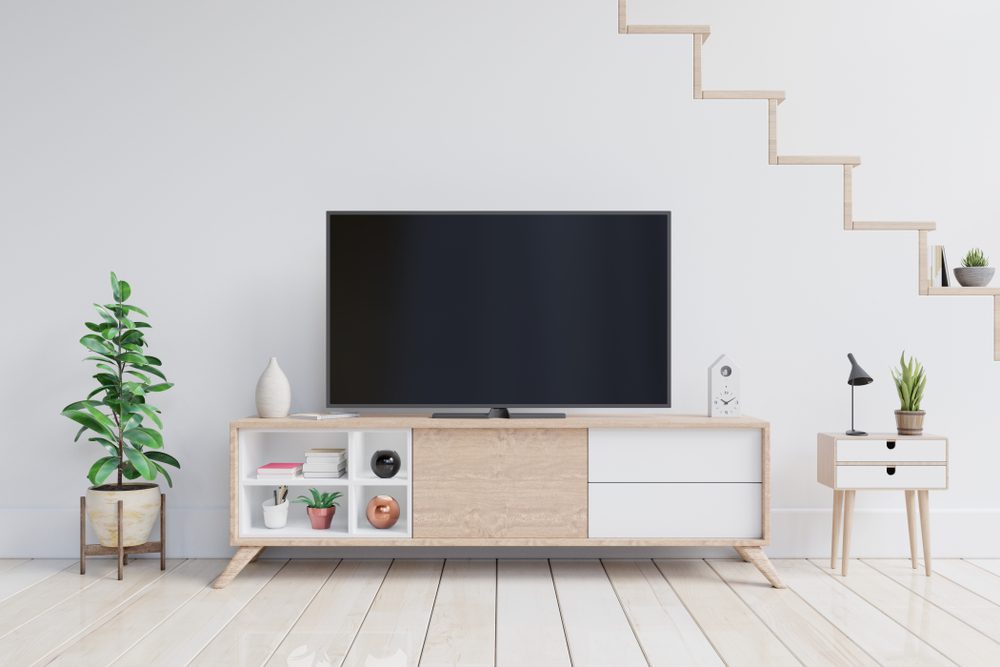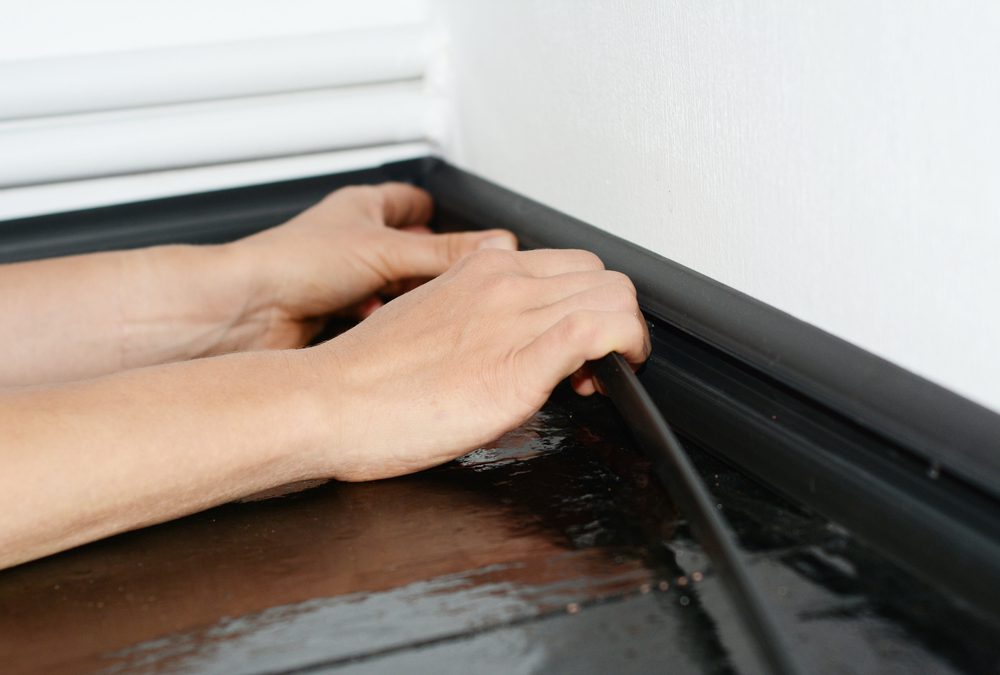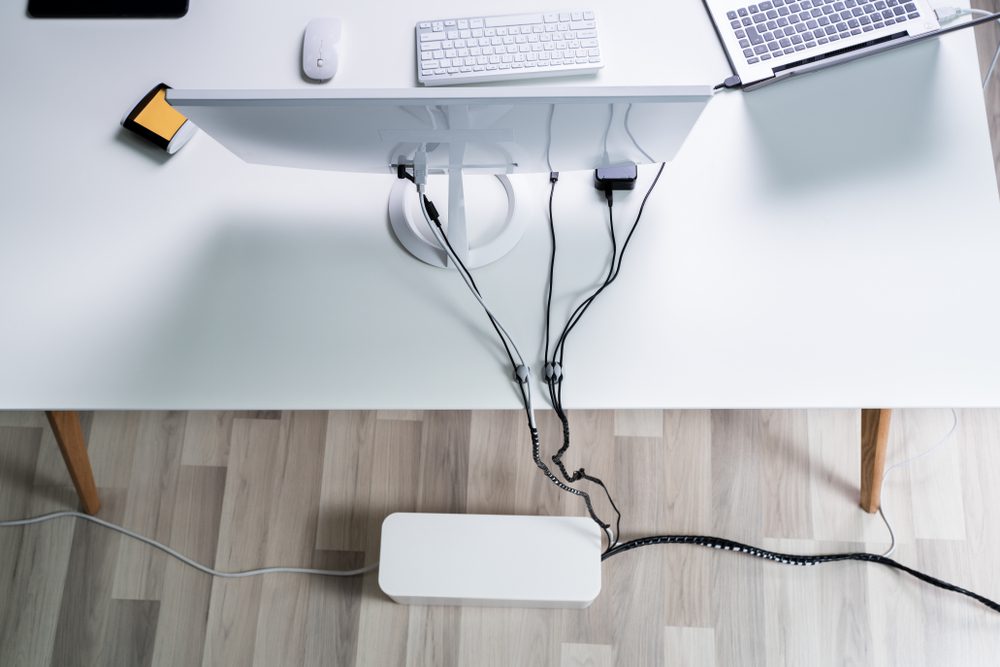We all hate having wires and cords all over the house
When all of the wires and cords in a house are tucked away — the power strips are camouflaged, the TV wires are hidden — the whole place looks neater. No one would deny this. It’s basically one of those finishing details that help to distinguish a cluttered house from a highly organized one. It’s not that hard to hide the wires and cords in your home, but it does require a plan, several store-bought organizers, and some inventive solutions.
Most houses haven’t been designed to naturally cover wires (unless your home provides reliable coverage, and if it does, that’s great!). On top of this, we have more tech devices nowadays than ever before, which means more wires and cords.
That’s why we decided to give you some cord control ideas so you can finally check these small organizing tasks off your to-do lists. We’ll go through the most common cord clutter hotspots to help you find out how to keep wires and cords out of sight in every room.
Start by finding out how to hide TV cords (definitely the No. 1 cord complaint out there), then go after power strips and computer and appliance cords. By the end, every wire should be under control.

1. Hide the Wires and Cords Behind the Wall
Do you want a TV with fully concealed wiring? Don’t worry, you don’t have to buy e new entertainment center. All you have to do is to run the TV wires behind the wall. You’ll need a drill and drywall saw or utility knife to make two holes in the wall — one near the outlet and the other behind your television.
Before cutting the holes, it’s very important to have a stud finder that you can use to ensure the spots you’re about to drill aren’t near any wall studs. Also, remember to shut off the electrical power to the room.
Once you’ve cut the two holes, the next step would be to install cable plates on each one of them. After doing this, run the wires through both plates, starting with the top one and finishing with the lower one. If your cords are too short, consider installing a cable kit and in-wall power, which provides an outlet right behind your TV.
This trick works for most wires and cords you have in your house. If you don’t want to cut holes in your walls, there are other ways to hide cords so keep reading!
2. Conceal Your Power Strip
Although many things rely on the power strip as their source of electricity, cord clutter is frequently the major attraction of this show. To hide all those wires and cords, lift the power strip off the ground. Most of them feature small holes on the back that allow them to be hung on the wall with a few nails or screws.
Now, if your entertainment center has long legs, another option would be to install the power strip right below its base. This will cover the gap between the wall and the furniture. A third option would be to install a wall-mounted power strip to plug it right into the outlet.
3. Keep the Cable Box Out of Sight
Most of us have several peripheral devices — Apple TVs, Rokus, cable boxes and so on — that additionally contribute to cable clutter. So, let’s be honest, all those wires and cords aren’t the most stylish things to keep in your sight during screen time.
One of the finest ways to hide them is to have furniture specially designed to conceal those ugly wires and cords. This doesn’t mean that you’ll have to change your furniture. Every cabinet or sideboard can be turned into a functional piece of furniture.
If your portion of furniture lacks a hole for the cords, you may easily add one using a hole-cutter attachment and a drill. If you don’t want to open the drawer or the center entertainment’s doors every time you want to watch TV, choose an infrared receiver that links right to the cable box.

4. Keep Your Wires and Cords Inside the Baseboard
According to Cable Organizer, if a cord crosses a foot traffic area, it must be covered with a protective cover or hidden somewhere to avoid tripping over it. You can buy an easy-to-install and lightweight baseboard molding that features a hollow inner cavity meant to hide wires and cords.
This is an excellent solution, especially if your computer or TV can’t be placed near the outlet for whatever reason. You just have to install these baseboards after running the wires along the base of the wall.
Don’t worry, if you already have baseboards in your house, replacing them isn’t always a solution. All you need is a router and some skills to hollow out your baseboard so you can make your own raceway. Just make sure you work slowly to avoid damaging the baseboard. Once you’re done, cover the cords by installing the baseboard along the base of the wall.
5. Use a Large Floor Basket or a Box
Baskets and boxes are an excellent way to keep your wires and cords out of sight and still have a stylish home. Whatever your home design, there are multiple solutions available, ranging from wire baskets to wooden boxes. You just have to choose the one you like the most. A basket or box with handles is the best choice — use some velcro ties to keep all your cords together and run them through the back handle.
Boxes are also an effective method to store wires and cables while not in use. Our best advice? Don’t throw away toilet paper rolls. You can use them as the ultimate DIY storage device. Stand the rolls up in your box or basket and glue them together. Then gather up your wires and cables and store them in the paper rolls’ “pockets” for tidy storage.

6. Use a Cable Box
A classic charging box is one of the easiest ways to keep all the wires together and in a single place. It’s definitely a life-changer when it comes to covering the tangle of cables that frequently happens when using an extension lead. You can find many cable boxes online, but you can also make a DIY box that meets your interior design.
All you’ll need is a cardboard box or a shoebox (make sure it’s a good quality one), a sticky back plastic and a craft knife. You have to follow 3 basic steps:
- Make a slit or a hole at each end of the box.
- Cover the box with sticky back plastic to make it look as you’d prefer.
- After this, place the extension cable inside, plug in your devices and run the wires through the holes.
7. Grab a Cable Catch or Some Cable Clips
If you’re still working from home, you probably use more than a computer and a phone. You may also have a printer. Or a scanner. And, unless you have a separate home office, these kinds of devices tend to be pretty large and unattractive in most rooms. Not to mention lamps or other electrical items. The thing is, those who work from home know exactly how annoying it can be to have untidy cables in plain sight.
If you’re familiar with this situation, you may want to try a cable catch. Using it on your nightstand or desktop will prevent the extension cord from falling to the floor every time you unplug an electrical device. Similarly, cable clips are also useful in keeping the wires and cords in place and out of the way. Just simply stick them onto the furniture where you want to hide those wires and that’s it! Your desk will no longer look like a jungle.
You may also want to know how to Declutter Using These 10 Brilliant Storage Tips!